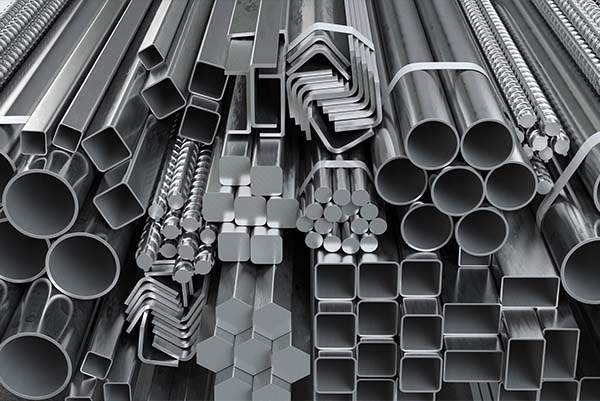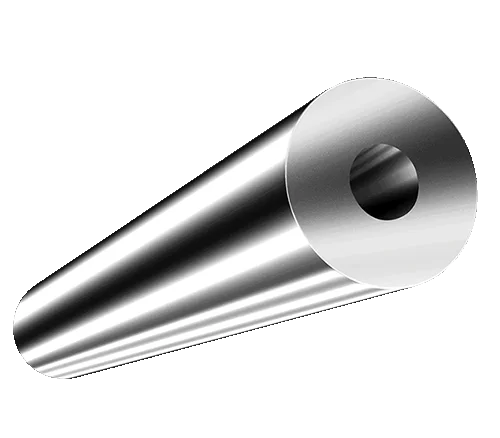Shandong Qilu lndustrial Co.,Ltd.
Crafting Stainless Steel Forgings for Superior Performance
Introduction

Stainless steel forgings have long been heralded for their exceptional strength, durability, and corrosion resistance. In various industries, from aerospace to automotive, these forgings serve as vital components in ensuring the reliability and longevity of critical machinery and structures. In this comprehensive guide, we delve into the intricate process of crafting stainless steel forging to achieve superior performance, exploring the materials, techniques, and applications that make them indispensable.
Understanding Stainless Steel Forgings
Stainless steel forgings are manufactured through the process of shaping heated metal into desired forms using localized compressive forces. This method imparts unique properties to the material, enhancing its mechanical strength and resistance to corrosion. Understanding the composition and characteristics of stainless steel is crucial in producing forgings tailored to specific applications.
Key Advantages of Stainless Steel Forgings
Exceptional Tensile Strength: Stainless steel forgings exhibit exceptional tensile strength, making them capable of withstanding high-stress environments without compromising structural integrity. This characteristic is particularly crucial in applications where heavy loads, vibrations, or impacts are common, such as in machinery components, automotive parts, and industrial equipment.
Corrosion Resistance: One of the most notable advantages of stainless steel forgings is their outstanding resistance to corrosion. This resistance is primarily attributed to the chromium content in stainless steel, which forms a passive oxide layer on the surface, preventing rust and corrosion even in harsh environments exposed to moisture, chemicals, and saltwater. As a result, stainless steel forging are widely used in marine, offshore, chemical processing, and food processing industries where corrosion poses a significant risk to equipment longevity and performance.
High Temperature Resistance: Stainless steel forging retain their mechanical properties at elevated temperatures, making them suitable for applications exposed to extreme heat or thermal cycling. Unlike many other materials that may degrade or lose strength under high temperatures, stainless steel forging maintain their structural integrity, ensuring reliable performance in demanding conditions. This characteristic is particularly advantageous in aerospace, power generation, and automotive industries, where components are subjected to intense heat during operation.
Versatility: Stainless steel forgings offer versatility in design and fabrication, allowing for the production of complex shapes and geometries with precision and accuracy. This versatility enables engineers and designers to optimize component designs for specific performance requirements, resulting in efficient and cost-effective solutions. Additionally, stainless steel forging can be easily machined, welded, and fabricated into various forms, further enhancing their applicability across diverse industries and applications.
Longevity and Durability: Due to their inherent strength, corrosion resistance, and thermal stability, stainless steel forging are renowned for their longevity and durability. These forgings can withstand harsh operating conditions, frequent usage, and prolonged exposure to environmental factors without experiencing degradation or premature failure. As a result, equipment and structures incorporating stainless steel forging enjoy extended service life, reduced maintenance requirements, and lower lifecycle costs, contributing to overall operational efficiency and productivity.
Crafting Process: From Raw Material to Finished Product
The crafting of stainless steel forgings involves a series of precise steps, each contributing to the final product’s quality and performance. From selecting the appropriate grade of stainless steel to forging, heat treatment, and finishing, every stage demands meticulous attention to detail and adherence to strict quality standards. Below is an overview of the crafting process:
| Stage | Description |
|---|---|
| Material Selection | Choose the appropriate grade of stainless steel based on the application. |
| Forging | Heat the metal to a suitable temperature and shape it using compressive force. |
| Heat Treatment | Apply controlled heating and cooling cycles to optimize material properties. |
| Machining | Precision machining to achieve the desired dimensions and surface finish. |
| Inspection & Testing | Rigorous testing to ensure compliance with quality standards and specifications. |
Applications and Industries

Stainless steel forgings find applications across a wide range of industries, thanks to their exceptional properties and versatility. From aerospace components subjected to high-stress conditions to marine equipment exposed to corrosive environments, these forgings play a vital role in ensuring performance, safety, and reliability.
Conclusion
In conclusion, the process of crafting stainless steel forgings is a meticulous endeavor that demands expertise, precision, and a deep understanding of material science. With their exceptional strength, durability, and corrosion resistance, stainless steel forging stand as a testament to human ingenuity and engineering excellence. As industries continue to evolve and demand ever-higher performance standards, stainless steel forgings will undoubtedly remain at the forefront of innovation and technological advancement.
FAQ
What are the main advantages of stainless steel forgings?
Stainless steel forgings offer exceptional strength, durability, and corrosion resistance, making them ideal for demanding applications.
What industries commonly use stainless steel forgings?
Stainless steel forgings find applications in aerospace, automotive, marine, oil and gas, and many other industries where performance and reliability are paramount.
How are stainless steel forgings manufactured?
Stainless steel forgings are crafted through a process that involves heating the metal to a suitable temperature and shaping it using compressive forces, followed by heat treatment and finishing processes to enhance properties and achieve desired dimensions.
What grades of stainless steel are commonly used for forgings?
Common grades include austenitic stainless steels such as 304 and 316, as well as martensitic and duplex stainless steels, each selected based on specific application requirements.
What quality standards govern the production of stainless steel forgings?
Various international standards, such as ASTM and ASME, provide guidelines for material selection, manufacturing processes, and quality control measures to ensure the reliability and performance of stainless steel forgings.
